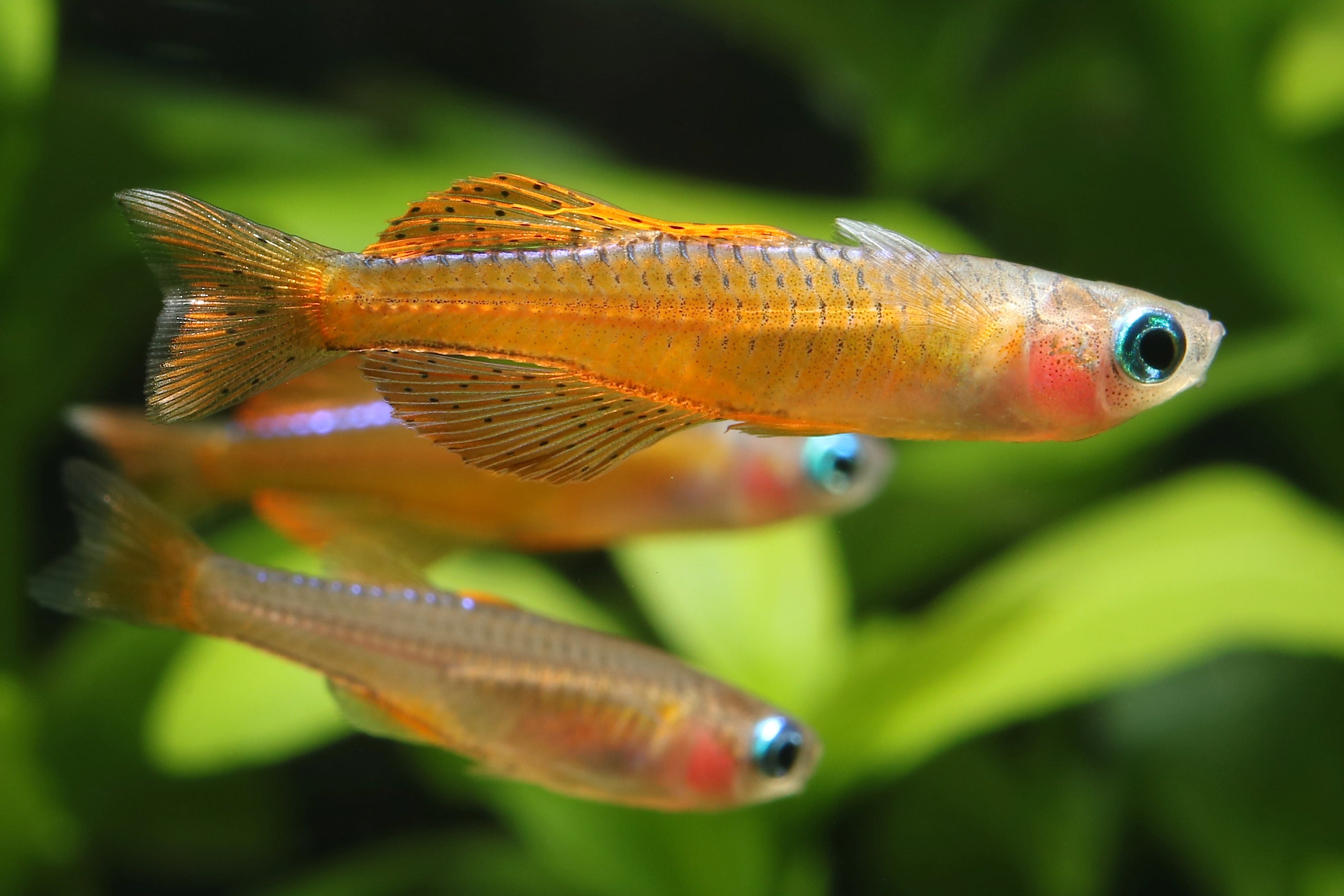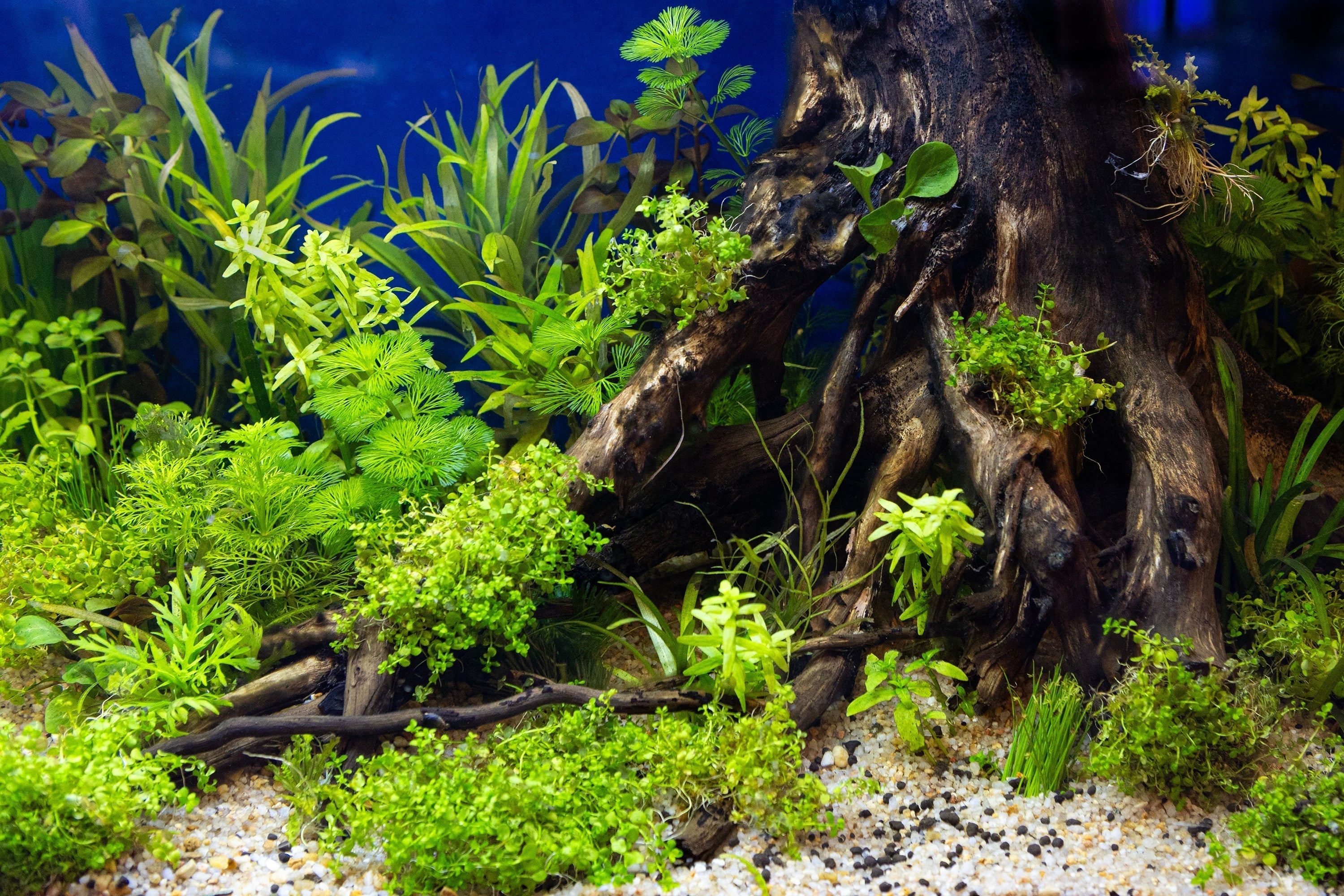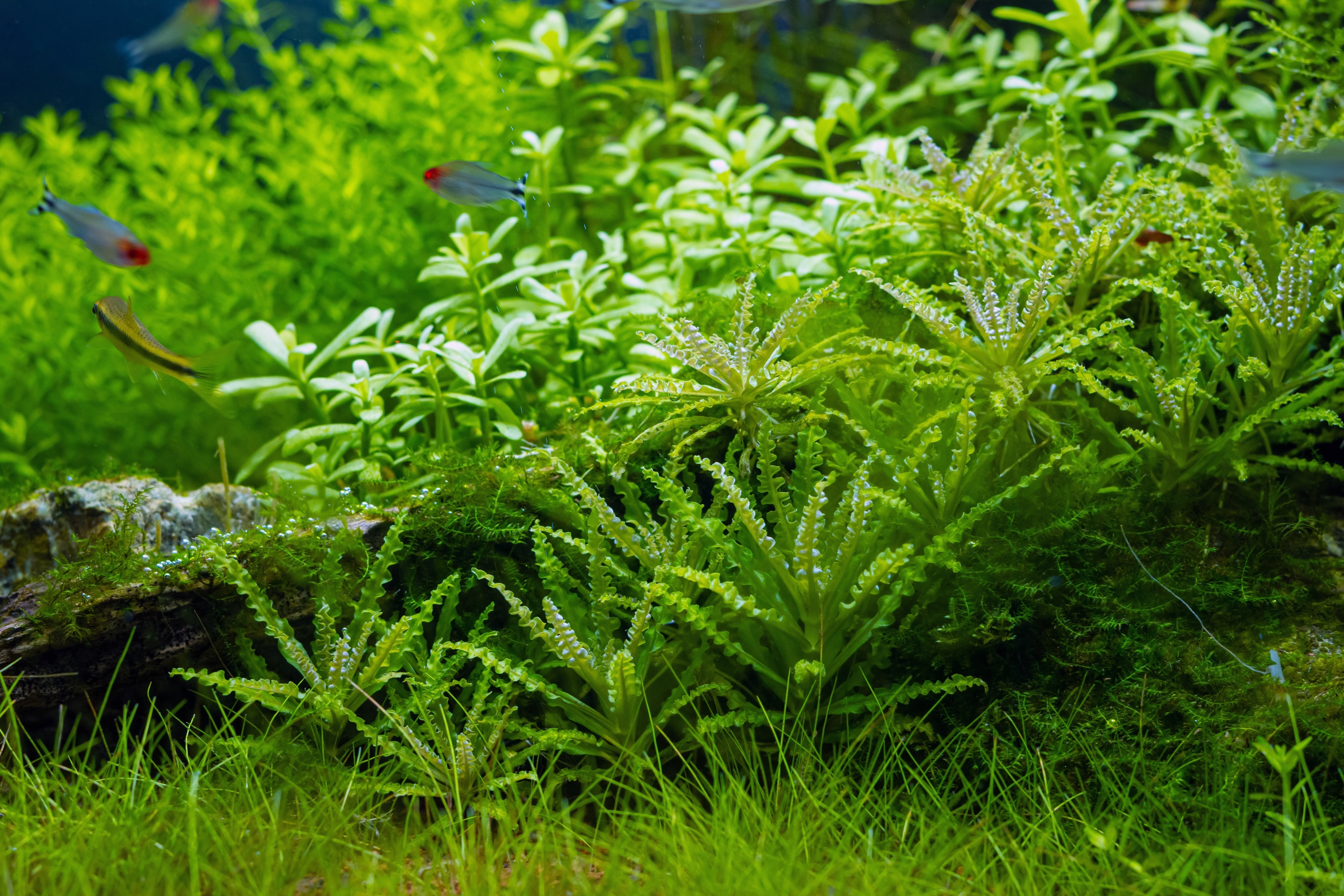Table of Contents
Rainbowfish is one of the most popular freshwater fish in the aquarium world. They are well-known for their colorful attractive appearance and various species. These schooling fish need to be kept in a group of six or more individuals. There is a wide selection of Rainbowfish species. Here are the top 5 of the most popular types of this social fish that Splashy Fish has in our aquarium store.
Origin
These freshwater jewels, hailing from the lush tropical waters of Australia, New Guinea, and Indonesia, are known for their shimmering scales, vibrant colors, and lively personalities. If you're looking to add a touch of brilliance to your planted aquarium, rainbowfish are a perfect choice. Rainbow fish are not just beautiful; they're also well-adapted to life in planted environments. Their natural habitats are often filled with lush aquatic vegetation, making them feel right at home in aquariums that mimic these conditions. In fact, planted tanks enhance their colors, as the plants provide a sense of security and promote their natural behaviors.
Top 5 Best Rainbow Fish for Your Fish Tank
This list includes the most 5 common types of rainbowfish that will enhance the beauty of a fish tank and give you a new challenge in an aquascape journey.
Red Neon Blue Eye Rainbowfish (Pseudomugil Luminatus)
Originating from Papua New Guinea, these miniature marvels reach a maximum size of 1.5 inches (3.8 cm) and are peaceful, social fish that thrive in groups of 6 or more. Males are the true showstoppers, flaunting vibrant red-orange bodies, iridescent blue eyes, and a distinctive blue line running along their backs. Females, while less colorful, still possess a subtle charm. A minimum of 10 gallons is recommended for these small fish, and they appreciate densely planted tanks with driftwood and aquarium rocks for hiding places. Being omnivores, Red Neon Blue Eye Rainbowfish readily accept high-quality flake food, live or frozen foods like brine shrimp and daphnia.
Boesemani Rainbow (Melanotaenia boesemani)
Hailing from West Papua, Indonesia, the Boesemani Rainbowfish is a popular choice for aquarists seeking a vibrant centerpiece. They grow up to 5 inches (12.7 cm) and are active and shooling fish, best kept in groups of 6 or more. Males are truly spectacular, with bright blue heads and orange-red bodies, while females are less intense in coloration. A minimum of 30 gallons is recommended to provide ample swimming space, along with some dense aquarium planting areas for security. In the wild, these fish are primarily herbivorous, feeding on algae and plant matter. In the aquarium, provide a diet rich in spirulina and vegetable-based flakes, supplemented with frozen or live foods.
Rainbow Maccullochi (Melanotaenia maccullochi)
Also known as the Redfin Rainbowfish, this species of Rainbowfish originates from northeastern Australia. They are smaller than the Boesemani, reaching up to 3 inches (7.6 cm). These peaceful fish are best kept in groups of 6 or more and are known for their beautiful red fins in males. A minimum tank size of 20 gallons is recommended, with plenty of plants and hiding places. Rainbow Maccullochi are omnivores and will thrive on a varied diet of flake food, and frozen or live foods like brine shrimp and daphnia.
Gertrude's Spotted Blue Eye Rainbowfish (Pseudomugil Gertrudea)
This vibrant species comes from New Guinea and northern Australia and can reach a size of 1.2-1.5 inches (3-3.8 cm). Spotted Blue Eye Rainbowfish are known for their delicate beauty, with males having rows of red spots along their bodies and iridescent blue eyes. They are peaceful and social, so a group of 10 or more is recommended. A well-planted tank of at least 15 gallons is ideal, with soft, slightly acidic water. Their diet should include high-quality flake food supplemented with small live or frozen foods like daphnia and brine shrimp.

Threaded Fin Dwarf Rainbow Fish (Iriatherina werneri)
Native to Northern Australia and New Guinea, Threadfin Rainbowfish are delicate beauties, reaching a maximum size of 2.5 inches (6.4 cm). They are peaceful but somewhat shy and do best in groups of 6 or more. With their slender bodies and elongated, flowing fins, this type of rainbow fish adds an elegant touch to any aquarium tank. Males are more colorful than females. A minimum of 15 gallons is recommended, with a densely planted setup and soft, acidic water (pH 6.0-7.0) being ideal for these tropical fish. Their diet in the wild is primarily insectivorous, so offer small live or frozen foods like daphnia and brine shrimp in the aquarium.

Tips to Care for Rainbow Fish
Providing the right environment is key to keeping your rainbowfish healthy and happy. Here are some essential care tips:
- Fish Tank Size: A minimum of 20 gallons is recommended for smaller species, while larger varieties may need 30 gallons or more.
- Water Parameters: Maintain a temperature of 72-78°F (22-26°C), a pH of 6.5-7.5, and low nitrate levels.
- Aquascaping: Incorporate plenty of aquatic plants, aquarium rock, and bonsai driftwood to create a natural environment with hiding places and visual barriers.
- Filtration and Water Flow: Use an aquarium filter that provides gentle to moderate water flow. Rainbowfish enjoy some current but not overly strong currents.
What do Rainbow Fish Eat?
Rainbowfish are omnivores, so a balanced diet is key. In the wild, they eat insects, larvae, algae, and other small aquatic creatures. In the aquarium, you can replicate this diet with a mix of:
- Flake food formulated for tropical fish
- Frozen food or live brine shrimp, bloodworms, daphnia
- Blanched vegetables like spinach or zucchini (in moderation)
How do Rainbowfish Breed?
If you're feeling ambitious, breeding rainbowfish can be a rewarding experience. While the specifics vary depending on the species, the general process involves:
- Conditioning: Feed the fish a high-quality diet rich in protein to prepare them for breeding.
- Spawning: Introduce a spawning mop or dense plants such as Java fern, Amazon sword, Cryptocoryne wendtii, Anubias nana, etc. where the fish can lay eggs.
- Egg Care: Some rainbowfish species guard their eggs, while others don't. If necessary, remove the eggs to a separate tank to prevent them from being eaten.
- Fry Rearing: Feed the fry infusoria and baby brine shrimp.
Conclusion
Rainbowfish bring a burst of color and energy to any planted aquarium. With their vibrant colors, lively personalities, and peaceful nature, they make ideal companions for a wide range of tank mates. Whether you're a beginner or an experienced aquarist, there's a rainbowfish species perfect for you. By choosing the right species and providing proper care, you can create a thriving aquatic ecosystem that will be the envy of any fish enthusiast. So dive into the world of rainbowfish and discover the joy of keeping these incredible fish.
At Splashy Fish Store, we supply a wide range of rainbow fish for sale from reliable sources. We care about the quality and strive to provide you with the best we can. Visit our fish store online or our aquarium Virginia to find what surprises await you.
FAQs
Are rainbow fishes easy to care for?
Most rainbowfish are relatively easy to care for, making them a great choice for beginner and experienced aquarists alike.
Do rainbowfish need a heater?
Yes, rainbowfish are tropical fish and need an aquarium heater to maintain a stable water temperature.
Can rainbow fish live with other fish?
Rainbowfish are generally peaceful and can be kept with other community fish of similar size and temperament such as Corydoras catfish, Tetras, Kuhli loaches, Barbs, etc.



























